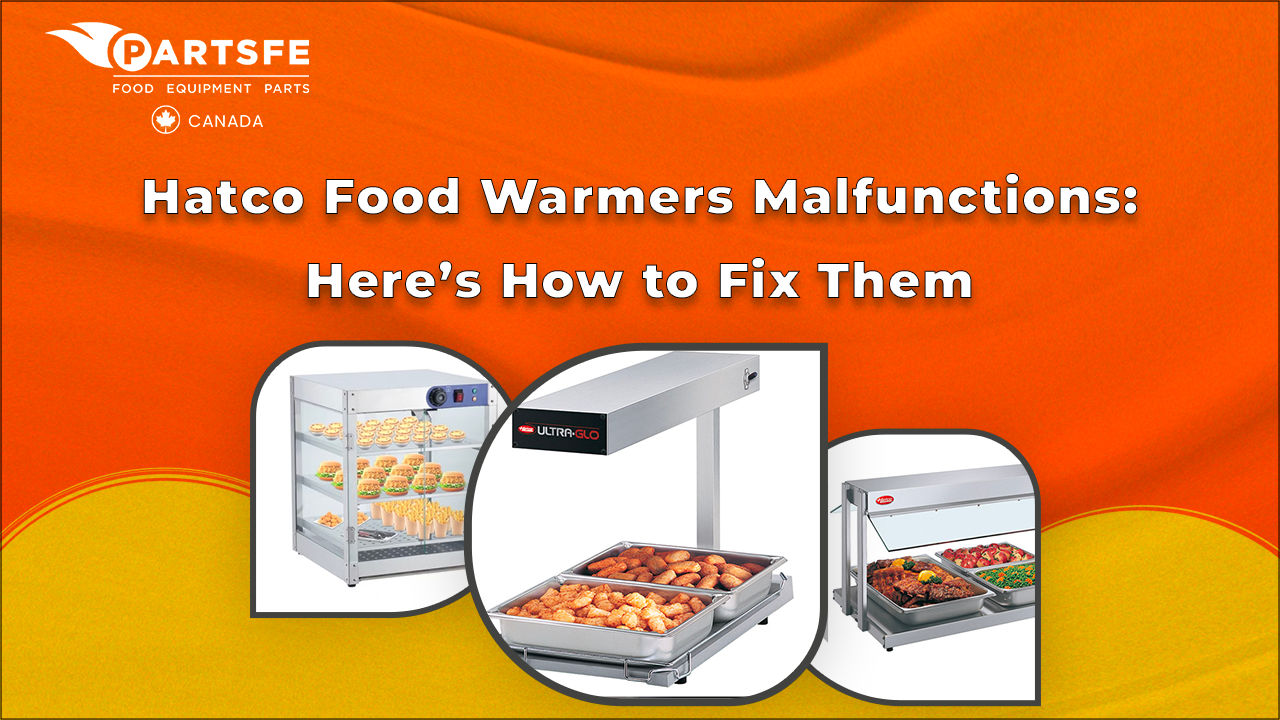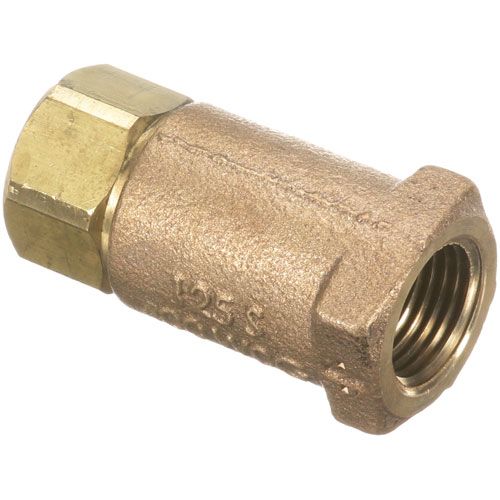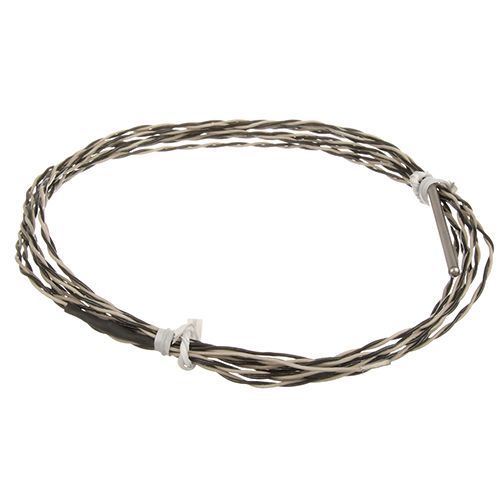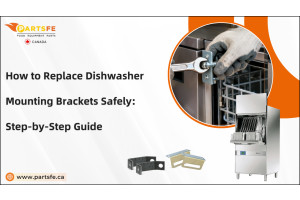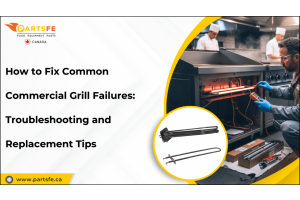Hatco Food Warmers Malfunctions: Here’s How to Fix Them
In commercial kitchens, where efficiency and speed are paramount, Hatco food warmers play an essential role in maintaining food at safe, appetizing temperatures until they are ready to be served. These warmers are trusted by many businesses in the restaurant industry for their durability and reliable performance. However, like any high-use equipment, Hatco food warmers can experience malfunctions.
Whether it’s a Hatco food warmer display case or other models used in your restaurant, addressing malfunctions promptly can prevent downtime and ensure that food quality is maintained. In this article, we will cover common malfunctions in Hatco food warmers, explain how to fix them, and provide tips on how to avoid these issues in commercial restaurant environments.
| Table of Contents: Common Hatco Food Warmers Malfunctions How to Fix Hatco Food Warmers Malfunctions Preventing Future Hatco Food Warmer Issues |
Common Hatco Food Warmers Malfunctions
The demanding environment of a commercial kitchen means that Hatco food warmers are often in continuous use. This high intensity can sometimes lead to malfunctions. Below are six of the most common issues that restaurants face with their Hatco food warmers and how these can disrupt kitchen operations:
No Heat or Low Heat
One of the most disruptive issues a restaurant can face is a Hatco food warmer that fails to heat or heats insufficiently. This issue can slow down service times and affect food safety.
Temperature Fluctuations
Inconsistent temperatures are especially problematic in commercial kitchens where food quality and safety must be maintained at all times. A Hatco food warmer with temperature fluctuations could lead to overcooked or undercooked dishes, which impacts the overall dining experience.
Excessive Noise
While noise from the motor or fan may be normal, excessive or unusual noise can be a sign of an internal problem. If your Hatco food warmer is creating unnecessary noise, it might lead to disruption in a busy kitchen environment.
Power Issues
Without power, your Hatco food warmer can’t serve its purpose. Power-related issues—like a unit not turning on or unexpectedly losing power—can leave you scrambling in a high-volume setting.
Burning Smell
A burning smell is a red flag in any kitchen. For Hatco food warmers, this could mean overheating components or even electrical issues. A burning smell in a busy restaurant kitchen is not only a safety hazard but also a signal to act immediately to prevent further damage.
Overheating
Hatco food warming equipment is designed to maintain consistent food temperatures. However, if it overheats, it could compromise the quality of your food or even cause damage to the unit. In a commercial setting, an overheating warmer can create operational inefficiencies.
At PartsFe, you can easily find high-quality Hatco parts for food warmers to keep your kitchen running smoothly. We offer a wide range of essential components, including Hatco food warmer bulbs, warmer elements, thermostats, and switches.
How to Fix Hatco Food Warmers Malfunctions
When a malfunction arises, the priority is to quickly resolve it to minimize disruption in service. Below are some solutions for addressing common Hatco food warmer troubleshooting issues that arise in restaurants and commercial kitchens.
Fixing No Heat or Low Heat
A Hatco food warmer that isn't heating properly could be due to issues like a faulty heating element or thermostat.
-
Check Power Supply: Ensure the unit is plugged in and that there’s no issue with the power source. If the power supply is fine, proceed to the next steps.
-
Test the Hatco Food Warmer Element: The heating element could be the culprit. Use a multimeter to check for continuity. If the element is defective, replace it immediately to restore full heating capability.
-
Inspect the Thermostat: A malfunctioning thermostat will cause heating inconsistencies. Check for signs of wear and tear and test the thermostat for functionality. If it’s not working properly, replace it.
-
Clear Airflow Obstructions: Food warmers rely on air circulation to maintain proper temperatures. Ensure that there are no blockages or debris inside the unit.
Tip: In commercial settings, always have spare Hatco food warmer parts on hand to minimize downtime.
Fixing Temperature Fluctuations
Fluctuating temperatures can negatively affect food quality and safety. This problem is common in busy kitchens, where temperature control is crucial.
-
Inspect the Thermostat: If the thermostat is malfunctioning, it can lead to temperature inconsistencies. Test it and replace it if necessary.
-
Examine the Temperature Sensor: A faulty sensor can result in incorrect temperature readings. Check the sensor for damage and replace it if needed.
-
Clean the Heating Elements: Dust, grease, and food particles can accumulate on the heating elements, reducing efficiency. Regular cleaning can help maintain consistent heat.
-
Check the Insulation: If the insulation inside the warmer is damaged, it can cause heat loss. Inspect and replace insulation as needed.
Tip: For Hatco food warmer display cases, always ensure that the unit is not overloaded, as this can also lead to temperature fluctuations.
Fixing Excessive Noise
Excessive noise in a Hatco food warmer could indicate problems with the motor, fan, or internal parts. Here’s how to fix it:
-
Check the Fan: Dirt and debris can build up on the fan, causing noise. Clean the fan blades and check for any damage.
-
Tighten Loose Components: In a busy kitchen, equipment can get jostled, causing screws or bolts to loosen. Tighten any loose parts to prevent further noise.
-
Examine the Motor: A noisy motor may require lubrication or may be worn out. If lubrication doesn’t resolve the issue, consider replacing the motor.
-
Lubricate Moving Parts: Parts such as gears and belts may require lubrication to function quietly and efficiently.
Tip: Regular maintenance of your Hatco food warming equipment is crucial to prevent excessive noise.
Fixing Power Issues
Power problems can cause your Hatco food warmer to stop functioning altogether. Here’s how to troubleshoot:
-
Inspect the Fuse: If the fuse is blown, replace it to restore functionality.
-
Check the Circuit Breaker: A tripped circuit breaker may be preventing power from reaching the unit. Reset it to restore power.
-
Test the Power Cord: If the power cord is damaged, the unit won’t receive power. Replace the cord if needed.
-
Examine the Power Switch: A faulty power switch can prevent the unit from turning on. Test the switch and replace it if necessary.
Tip: Ensure that your Hatco food warmer bulbs are functioning properly, as they can also affect the overall performance of the unit.
Fixing Burning Smell
A burning smell should be treated as an immediate issue to prevent further damage or fire hazards.
-
Turn Off the Unit Immediately: Disconnect the Hatco food warmer from the power supply to prevent further damage or safety issues.
-
Inspect for Dust or Grease: Check the interior of the unit for dust, grease, or food debris. Clean the unit thoroughly to eliminate the smell.
-
Check for Electrical Issues: A burning smell could also point to overheating electrical components. Inspect the wiring and connections for damage.
-
Examine the Hatco Food Warmer Bulbs: If the bulbs are malfunctioning, they could be the source of the smell. Replace them if needed.
Tip: Regularly clean your Hatco food warming equipment to reduce the risk of a burning smell caused by grease buildup.
Fixing Overheating
If your Hatco food warmer is overheating, it could cause food quality issues or damage to the unit itself.
-
Check the Thermostat: A malfunctioning thermostat is often the cause of overheating. Test and replace the thermostat if necessary.
-
Ensure Proper Airflow: Overheating can occur if vents or fans are blocked. Regularly clean the unit to ensure airflow is unimpeded.
-
Adjust Temperature Settings: Verify that the temperature settings are appropriate. Set the thermostat to the correct temperature and avoid overloading the unit.
-
Check for Dust and Dirt: Clean the unit regularly to prevent dust buildup, which can impede heat dissipation.
Tip: Ensure that your Hatco food warming equipment is placed in an environment with proper ventilation to avoid overheating.
Preventing Future Hatco Food Warmer Issues
Preventing malfunctions in Hatco food warmers is key to maintaining smooth kitchen operations and ensuring food safety. Consider these proactive measures:
-
Implement Regular Cleaning Schedules: Regularly clean the interior and exterior of the unit to prevent dirt and grease buildup.
-
Conduct Routine Inspections: Inspect components like the heating element, thermostat, and power cord periodically.
-
Train Staff on Proper Use: Ensure your kitchen staff knows how to operate the unit correctly to avoid common errors.
-
Replace Worn Parts Immediately: Always have spare Hatco food warmer parts on hand, especially for high-use items like heating elements and thermostats.
Hatco food warmers are integral to the smooth operation of commercial kitchens. Understanding common malfunctions, troubleshooting effectively, and taking preventative steps can help minimize downtime and keep food at optimal temperatures. By implementing the advice outlined in this article, you can ensure that your Hatco food warming equipment serves its purpose reliably and efficiently.
FAQs
What is the temperature of the Hatco warmer?
The typical temperature range for a Hatco food warmer is between 90°F to 200°F, depending on the model and settings.
How long do food warmers keep food warm?
Hatco food warmers can keep food warm for several hours, generally up to 4–6 hours, depending on the unit and food type.

